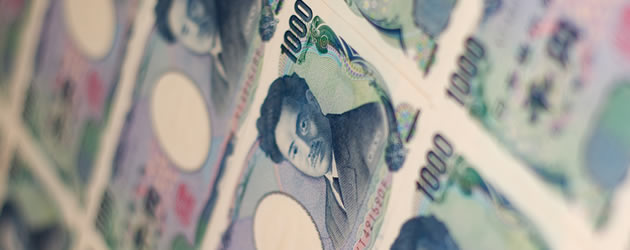
The Japanese Yen (JPY) exchange rate fell against the majority of its most traded peers on Wednesday and tumbled to its lowest level in seven years against the US Dollar (USD) after Bank of Japan Governor Haruhiko Kuroda said that more monetary easing could be introduced.
Against the Swiss Franc (CHF), the Japanese currency fell to its weakest level in thirty years and extended multi-year losses against the Pound and most other peers. The currency has been continuously weakened by the BoJ’s massive quantitative easing programme as it tries to spark growth in Japans long stagnating economy.
The Yens most recent run of declines began after the BoJ took the markets by surprise by announcing that it would boost its purchasing of Japanese government bonds.
Economists had believed that further action by the central bank would not be possible but Kuroda’s speech confirmed that policy makers would take further action.
‘The latest BOJ announcement made it sound like there isn’t much room left for them to act further because the market would dry up should they buy more JGBs, but with Kuroda’s speech, the message they are ready to take further action has gotten through. The view that there’s a possibility the BOJ may ease further is prompting Yen selling,’ said UBS AG regional chief investment officer Fumio Nakakubo.
Pound to Japanese Yen Forecast to Give Up some Gains
Further gains for the Pound were slowed after data showed that activity in the UK’s dominant Service sector slowed to a more than one-year low in October.
The Services PMI fell from the 58.7 figure recorded in September to 56.2 in October.
Economists had been forecasting a slight dip to 58.5.
The softer services PMI adds to weaker PMI data for the Construction and Manufacturing sectors released earlier in the week.
Japanese Yen Continues to Decline
The Japanese Yen was continuing to trade lower against both the Pound and US Dollar as the afternoon began. The Yen is likely to soften further as the session progresses as market attention now turns to the publication of the latest US ADP Employment change data. The report is expected to show that US employers continued to hire over 200,000 workers last month adding to signs that the US labour market is continuing to be performing well.
A better than expected figure will likely lead to investors increasing their bets that the Federal Reserve will raise interest rates early next year.

